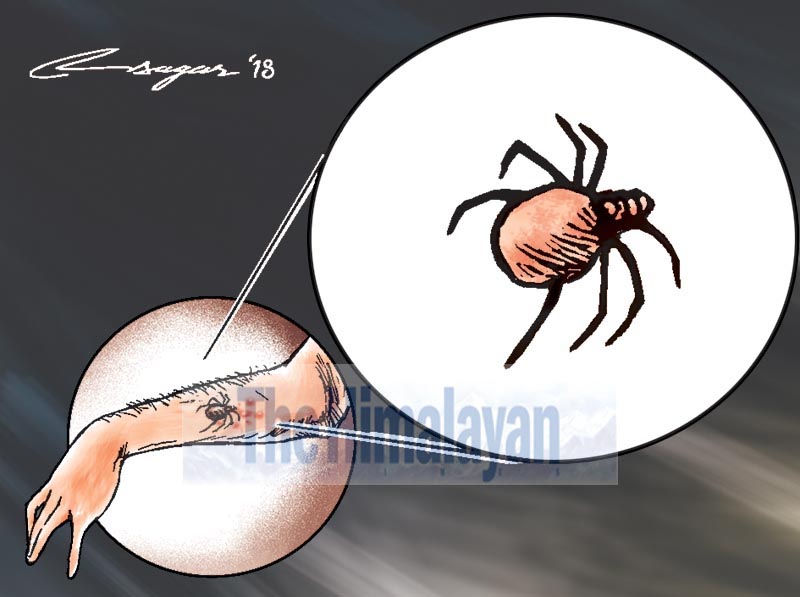Disease deadlier than dengue spreading in valley
Kathmandu, September 23
After the outbreak of dengue, Kathmandu valley is witnessing rapid spread of scrub typhus, as the number of patients infected by the disease, caused by parasites found in rats, has more than doubled this year compared to the last year.
The valley reported 15 cases of scrub typhus in 2018, but the number of patients has more than doubled to 40 this year, according to the Epidemiology and Disease Control Division of the Department of Health Services.
Many more people may have been infected by the disease, but not diagnosed because symptoms of scrub typhus are similar to dengue, fear health experts. The most common symptoms of scrub typhus, also referred to as bush typhus, are fever, headache, body aches and rashes, similar to dengue.
A total of 695 people have tested positive for scrub typhus in 61 districts of the country between July 17 and September 23. In 2018, the number of people infected by the disease stood at 1,098.
Possibilities of detection of more cases of scrub typhus in the coming days cannot be ruled out, as harvest season is about to start and people who come in contact with rats in the fields may contract the disease, according to Bibek Kumar Lal, director of the Epidemiology and Disease Control Division.
Scrub typhus is an infectious illness caused by a parasite — chigger — which is found in rats and mice. The mites in their larval stage contract the disease by biting rodents. The mites are both the vector and reservoir of the disease.
Infected chiggers are mostly found during the wet season in forest clearings, riverbanks and grassy fields. The southern Tarai region of Nepal provides a suitable environment for parasites that cause scrub typhus to grow, Bastola said.
“Infected patients should contact the nearest health centre as early as possible because mortality rate from scrub typhus is higher than dengue. This means people can die if they do not receive proper treatment at the earliest,” said Anup Bastola, chief consultant for tropical medicine at Sukraraj Tropical and Infectious Disease Hospital, Teku.
Up to 30 to 70 per cent of those severely affected by the disease die globally due to lack of appropriate treatment. “If scrub typhus is not treated on time, the bacteria that causes the disease severely affects blood vessels, leading to failure of organs, such as kidney and liver. People severely infected with the disease are also prone to contracting pneumonia and encephalitis,” said Bastola.
This year the disease has been seen in high altitude areas such as Solukhumbu. It has also been reported for the first time in hilly areas — Jajarkot and Kalikot — largely because of climate change.
“The chigger that causes the disease grows in temperature of 20-30 degree Celsius. Rise in temperature and humidity have provided a favourable environment for the bacterial growth,” said Bastola.
So far, Dhading district has reported 74 scrub typhus cases, followed by Dadeldhura (61), Palpa (59), Rupandehi (46), Kailali (44) and Chitwan (39).
“The disease is seen usually in August and September, as this is the time when bushes grow rapidly due to rainfall, which increases the movement of rodents,” said Bastola.






